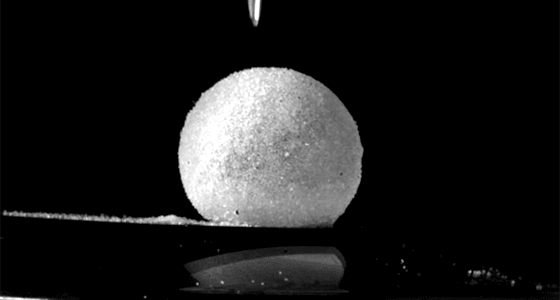
For instance, French physicists in 2016 worked out a theoretical model for the exact mechanism for how soap bubbles form when jets of air hit a soapy film.
And in 2020, physicists determined that a key ingredient for creating gigantic bubbles is mixing in polymers of varying strand lengths. That produces a soap film able to stretch sufficiently thin to make a giant bubble without breaking.Bubbles naturally take on the form of a sphere: a volume of air encased in a very thin liquid skin that isolates each bubble in a foam from its neighbors.
The greater the surface area, the more energy that is required to maintain a given shape, which is why the bubbles seek to assume the shape with the least surface area: a sphere.
The combination of these two effects is called "coarsening." Adding some kind of surfactant keeps surface tension from collapsing bubbles by strengthening the thin liquid film walls that separate them.
The physicists dubbed the objects "gas marbles." The objects are related to so-called liquid marbles—droplets of liquid coated with microscopic, liquid-repelling beads, which can roll around on a solid surface without breaking apart.
They experimented with three different kinds of bubbles: standard soap bubbles, gas marbles made using water, and gas marbles made with water and glycerol.
spread plastic particles on the surface of a water bath, which jammed together to form a granular raft.
Then the researchers injected a bit of air with a syringe just below the raft to form bubbles and used a spoon to push the bubbles over the raft until the entire surface of each bubble was coated with plastic particles.
The standard soap bubbles burst within a minute or so, as expected.They were also able to create robust composite liquid films and shape them into different objects by dipping a metallic frame below a liquid surface covered with a layer of jammed plastic particles.
were able to build a 3D pyramid shape out of a water/glycerol liquid film.